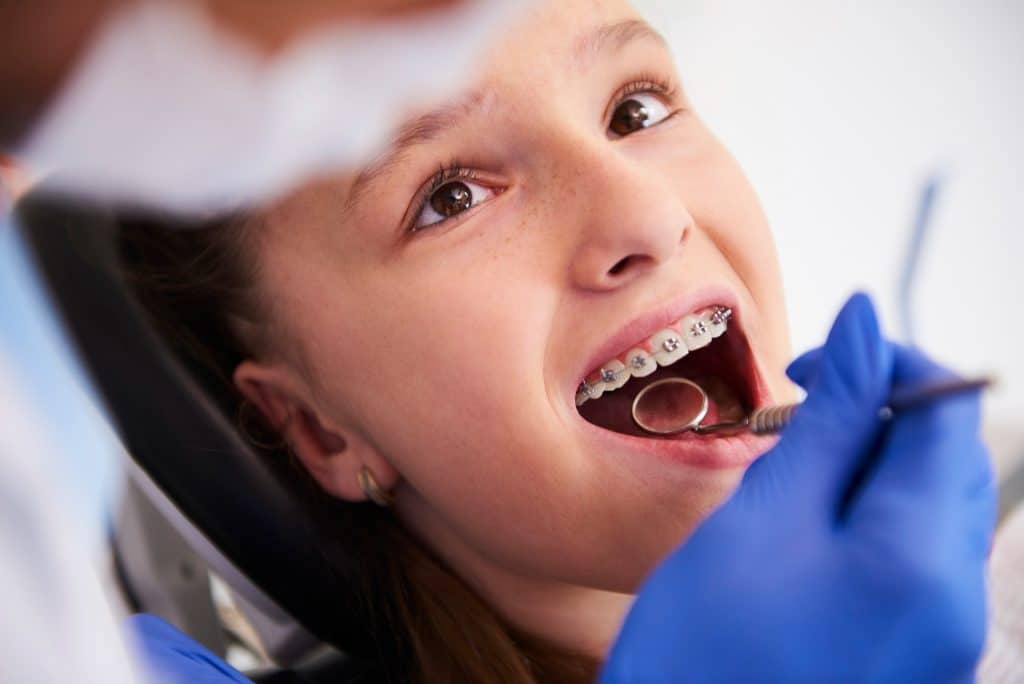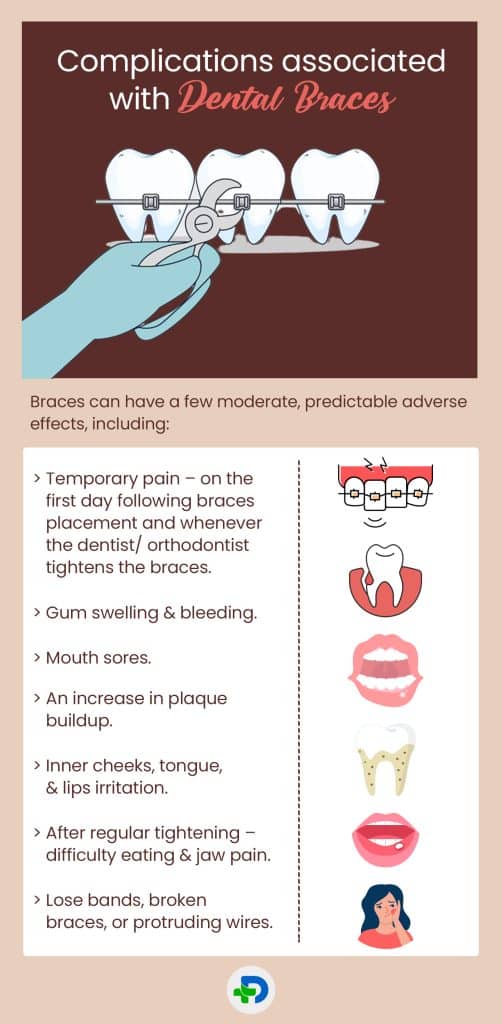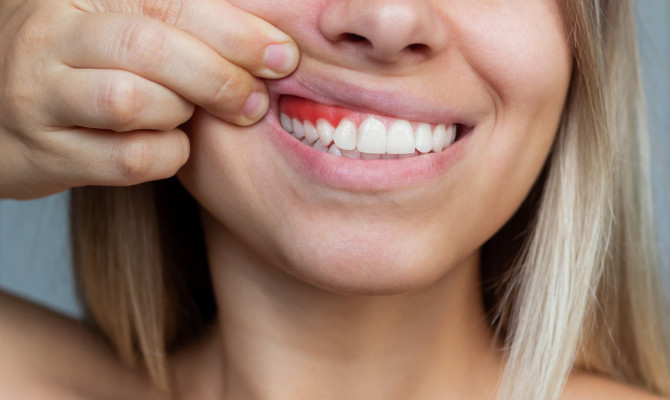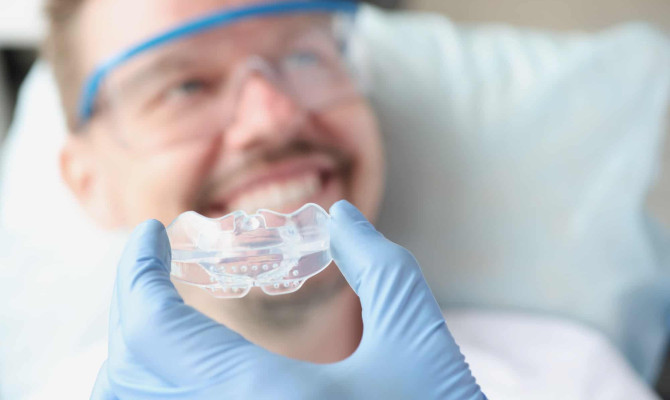Dental braces : Types, significance, and care

- Dental braces
- 16 Aug 2023
Overview
What are dental braces ?
Dental braces assist in realigning teeth when crowded, widely spread apart, positioned too far front or back, or even turned. Dental braces are available for individuals of various ages. However, it is primarily used on teens to make early corrections to the bite and positioning of teeth to avoid issues in the future. People today often get braces to whiten their teeth. Orthodontists typically use braces. However, some general dentists also provide them.

Types
Types of dental braces
Some people avoided wearing braces in the past because they disliked metallic smiles. Today, braces come in many types.
Metal/ traditional braces
- Consist of metal brackets and wires attached to the teeth to allow position changes as required.1Types | Researched based study from Nlm.nih.gov
- Bands of rubber or metal ties connect brackets to the wires in some braces. These bands exert extra pressure to help to straighten and align the teeth.
- One of the most popular braces today, this brace is often the least expensive and most successful alternative.
- They are, however, the most visible, and when a person smiles, they become noticeable, making some people self-conscious.
Ceramic braces
- Ceramic braces are comparable to standard metal braces in size and design, but they also contain a ceramic material that blends seamlessly into the shade of the teeth to hide the braces.
- Ceramic braces have the disadvantage of being more brittle than metal braces, making them more likely to break.1Types | Researched based study from Nlm.nih.gov
Lingual braces
- Traditional braces and lingual braces both use metal, but lingual braces are affixed to the interior of the teeth, making them difficult to see from the outside.
- They are less efficient than metal braces, and straightening teeth with them typically takes longer.
- The patient can experience discomfort due to their close closeness to the tongue.1Types | Researched based study from Nlm.nih.gov
- Furthermore, cleaning them is more complicated.
Self-ligating braces
- Use a combined structure that keeps the archwire in place rather than tiny elastic bands.
- This type of brace is as effective as metal braces and may provide more control over the device, resulting in more exact tooth alignment.
- They are noticeable from the outside despite being generally more expensive.
Clear aligners
- Invisible braces, as the name implies, are unique since they do not need brackets and wires.
- They use a set of individually produced, transparent plastic trays that the orthodontist places over the teeth.
- Throughout treatment, taking out these aligners and swapping them out for the next pair every two weeks is simple.
- Most people require from eighteen to thirty trays to achieve their goals.
- One can take out the aligners to eat, clean their teeth, or floss, but for best results, wear them for at least 22 hours daily.
- They gently reposition the teeth into the proper places and straighten the smile using pressure.
- To secure the aligners on the teeth, the orthodontist may also use tooth-colored attachments.
- Due to their nearly undetectable nature and increased freedom to consume any food or beverage, these kinds of braces are preferred by many patients.
- However, they are far more expensive and are only effective in treating mild to moderate dental issues in adolescents and grownups. 2Types | Researched based study from Nlm.nih.gov
Function
How do they function?
- Over time, braces apply gentle, continuous pressure to move teeth into their desired places, altering how a person’s smile looks.
- The jaw bones gradually adjust to this pressure.
- Braces require time, and everyone’s course of treatment differs.
Significance
Significance of using dental braces
Dental braces can benefit an individual in the following ways:
- Properly aligns the teeth and the jaws.
- Makes cleaning the teeth easier.
- Prevents future tooth decay and gum disease.
- Improves the bite, avoiding/treating temporomandibular joint (TMJ) issues.
- Restores normal functions such as chewing and talking.
- Enhances the beauty of one’s smile.3Significance | Researched based study from Aaoinfo.org
Complications

Complications associated with dental braces
Braces can have a few moderate, predictable adverse effects, including:
- Temporary pain – on the first day following braces placement and whenever the dentist/ orthodontist tightens the braces.
- Gum swelling and bleeding.4Complications| Researched based study from Nlm.nih.gov
- Mouth sores.
- An increase in plaque buildup.
- Inner cheeks, tongue, and lips irritation.
- After regular tightening – difficulty eating and jaw pain.
- Lose bands, broken braces, or protruding wires.
- Staining of teeth due to increased plaque.
Pre-treatment
Care before and during treatment
Following these simple instructions will help take good care of the teeth and braces throughout a treatment:
- Brush your teeth at least twice a day with toothpaste that contains fluoride and a soft-bristled toothbrush.
- The majority of orthodontists advise brushing with fluoride toothpaste after each meal or snack and carefully removing any food that may have become lodged in your braces.
- Once daily, floss in the areas of the braces and teeth.
- To remove sticky food, use water floss or an air flosser.
- Use an antimicrobial mouthwash free of alcohol twice daily.
- Patients can take out the transparent aligners daily to clean and store them safely when unused.
- Steer clear of foods like ice, nuts, hard sweets, sticky or chewy candies, popcorn, etc., that are hard, crunchy, or sticky.5Pre-treatment| Researched based study from Jada.ada.org
- Taking acetaminophen after orthodontic treatments can help with pain management.
- Ibuprofen and other NSAIDs that impede tooth mobility should be avoided.
- Use the corticosteroid ointment your dentist or orthodontist advised if you have any mouth ulcers.
- Rinse the mouth with warm salt water or an antiseptic mouthwash if a wire pokes. One can also numb the area with a dental anesthetic gel or lotion available over the counter.
- Cover any sharp brackets or protruding wires with the orthodontic wax your orthodontist gave you. Additionally, one can purchase dental wax at any pharmacy to soothe mouth irritation.
- Go to your orthodontist frequently for maintenance and tightening.
- Visit the dentist every six months for basic cleanings and dental treatment.
Post-treatment
Care after braces
- The dentist will carefully clean the teeth after removing the braces.
- They might take photographs, X-rays, and bite impressions to assess the effectiveness of the treatment.
- They may also advise extracting the wisdom teeth if they erupt after removing the braces to stop the newly aligned teeth from shifting.
- Patients need to wear retainers, essential for maintaining the teeth’s new position.
- A retainer stops the teeth from reverting to their original positions.
- Even though the braces have adequately aligned the teeth, the surrounding tissues, like the bones, gums, and muscles, need time to stabilize in their new position fully.6Post-treatment | Researched based study from Clevelandclinic.org
- Teeth also tend to move over extended periods. The duration of wearing the retainer will thus differ from individual to individual.
- Retainers come in a variety of forms. Your dentist or orthodontist can assist you in making the best decision.
Takeaway
Takeaway
The ideal type of braces for an individual is determined by several criteria, including the nature of their problem, the severity of their disease, and their preferences. An orthodontist’s assistance can help a person choose the best one for them. An investment in braces can guarantee anyone a long-lasting, attractive smile. An individual’s general health, as well as appearance, may benefit from getting well-aligned teeth.
Any feedback on this article?
 This Articles content was accurate
This Articles content was accurate Very Informative Article
Very Informative Article I have a question or a comment
I have a question or a comment
 This article contains inaccurate content
This article contains inaccurate content This article was not helpful
This article was not helpful I have a question or a comment
I have a question or a comment
We appreciate your helpful feedback!
Checkout our social pages
References
-
National Library of Medicine
Practice of lingual orthodontics and practitioners’ opinion and experience with lingual braces in the United States | Types
-
National Library of Medicine
Orthodontic Treatment with Clear Aligners and The Scientific Reality Behind Their Marketing: A Literature Review | Types
-
American Association of Orthodontists
Why Orthodontics? | Significance
-
National Library of Medicine
Adverse effects of orthodontic treatment: A clinical perspective | Complications
-
The Journal of The American Dental Association
Braces | Pre-Treatment
-
Cleveland Clinic
Teeth Retainer | Post-Treatment





































